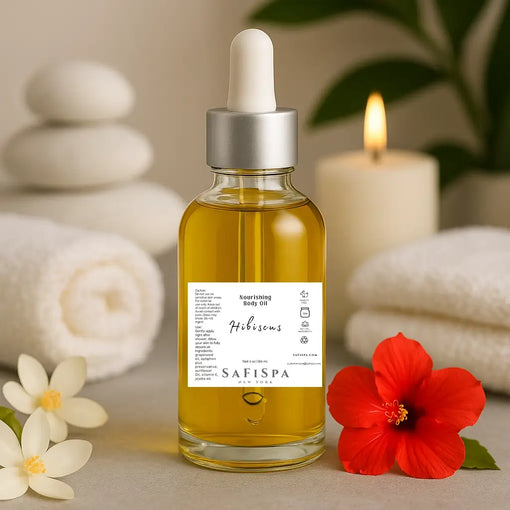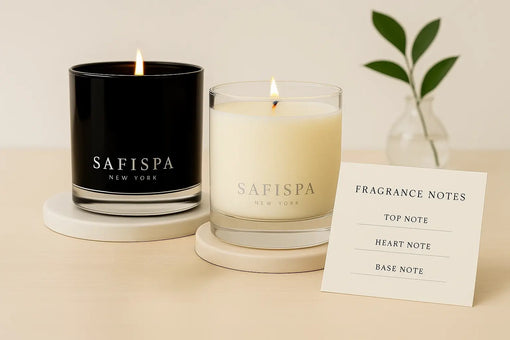Why Fall Candles Are More Than Just a Scent — The Science Behind Seasonal Aromatherapy
On the first cool night of September, many of us reach for the same quiet ritual: we light a candle and let the room soften. The flicker steadies the air; the scent—spice, smoke, vanilla—seems to pull memory forward. Neuroscientists have a term for this: the Proust effect, the way fragrance shortcuts straight to emotion. In an anxious world, that shortcut feels like grace.

What your brain does with “fall” smells
Of all the senses, smell has the most direct route to emotion. Olfactory signals bypass the brain’s rational filters and travel straight to the amygdala and hippocampus—the centers for feeling and memory. That’s why the faintest whiff of clove can summon your grandmother’s kitchen or a childhood festival in an instant.
Researchers at the Monell Chemical Senses Center have long documented how scent recognition is intertwined with autobiographical recall. “Smell is memory’s invisible hand,” says neuroscientist Pamela Dalton. “It reminds us who we are and where we’ve been.” When you light a candle in September, you’re not just scenting a space; you’re activating a neural network of nostalgia and comfort.
Scent, mood, and memory
Autumn’s sensory palette—wood smoke, cinnamon, amber—creates an atmosphere psychologists call environmental coherence: cues that signal safety and belonging. In behavioral studies, participants exposed to warm olfactory notes reported higher feelings of relaxation and social connection. It’s chemistry, not coincidence, that we crave these aromas as daylight wanes.
For SaFiSpa, a brand rooted in Caribbean wellness traditions, those cues also connect climate and culture. Co-founder Nicole Davis recalls growing up surrounded by clove-studded oranges and simmering nutmeg tea. “Scent was community,” she says. “It meant home.” The company’s fall line translates that memory into clean-burning soy wax and minimalist design, proving that nostalgia can be modern—and sustainable.
Aromatherapy evidence (what we know)
Aromatherapy isn’t magic—it’s measurable. Clinical reviews in journals such as Frontiers in Behavioral Neuroscience and Complementary Therapies in Medicine show that essential oils can modulate mood and physiological stress responses.
- Anxiety: Meta-analyses find lavender oil inhalation can modestly reduce acute anxiety in medical and dental settings. Citrus oils—particularly sweet orange and bergamot—show similar short-term effects.
- Alertness vs. calm: Peppermint and rosemary increase cognitive performance and heart-rate variability associated with alert focus, while lavender and ylang-ylang promote parasympathetic activity, signaling rest.
- Conditioned calm: Because scent and memory are paired, lighting a candle at the same hour daily can train the brain to associate that aroma with winding down—like a sensory cue for peace.
Think of fragrance not as a cure but as a cue: it primes the body for a state you want to reach. The right candle becomes a quiet therapist in glass.
The psychology of ritual
Anthropologists note that ritual—whether lighting incense or a candle—acts as “behavioral punctuation,” marking the shift from work to rest. In a 2023 study on domestic rituals, participants who engaged in scent-based routines reported higher perceived control over their environment and lower evening stress levels.
SaFiSpa’s customers describe this as “micro-wellness”: small, repeatable acts that anchor the day. The company’s blog encourages pairing candlelight with slow breathing or journaling, echoing mindfulness practices rooted in both Caribbean herbal traditions and contemporary cognitive therapy.
Burning smarter: indoor air quality
Not all candlelight is created equal. Combustion produces minute particulates regardless of wax type, but formulation and behavior make all the difference. Here’s how to burn beautifully and safely.
SaFiSpa formulates with renewable soy wax and cotton wicks free from zinc or lead cores, reducing heavy-metal emissions. Its fragrance oils are phthalate-free and tested for stability—because beauty shouldn’t compromise breathability.
How to choose a fall candle
Choosing a candle is part science, part art. The market is saturated with autumn labels, but a discerning eye can tell comfort from cliché. Consider four pillars of quality:
- Wax integrity: Soy and beeswax offer cleaner combustion and longer burn times. Avoid paraffin blends unless explicitly low-smoke certified.
- Wick structure: Look for cotton or paper; wooden wicks add ambience but require trimming.
- Fragrance architecture: A well-built candle follows perfumery’s pyramid—top, heart, base. For fall, top notes of citrus or pear lift the heavier spice and wood base, keeping the scent modern.
- Transparency: Honest brands list burn time, sourcing, and safety data. If details are scarce, the candle probably is too.
Think of your candle as a houseguest: it should enhance the room, not overpower it.
A seasonal pick: SaFiSpa’s Pumpkin Spice
Hand-poured in New York, SaFiSpa’s Pumpkin Spice Candle layers warm pumpkin, cinnamon, and vanilla bean over a creamy soy-wax base. The result is cozy but composed—more patisserie than pumpkin pie. The brand’s signature cotton wick ensures an even burn and a soft flame that flatters evening light.
Unlike mass-market spice candles that rely on synthetic cloying notes, SaFiSpa’s blend is tempered with a trace of cedarwood and tonka, giving the fragrance a rounded finish. It’s a candle you can live with daily, not just during Halloween week.
Pair Pumpkin Spice with SaFiSpa’s Sandalwood Vetiver Body Wash for a full-spectrum scent experience—air and skin in harmony.
A look ahead: the Caribbean Holiday Christmas Candle
As winter approaches, SaFiSpa unveils its newest creation: the Caribbean Holiday Christmas Candle. It captures the contrast of snow and sea—warm coconut milk, spiced vanilla, golden amber, and a hint of tropical blossom. Imagine a beach bonfire on Christmas Eve, or the sweetness of sorrel and nutmeg drifting through open windows.
The candle continues SaFiSpa’s mission of merging Caribbean heritage with modern minimalism. “I wanted to bottle the feeling of homecomings,” says Davis. “Even if you’re thousands of miles from the islands, that scent says warmth, family, celebration.”
For holiday hosts, the candle doubles as décor: its clear-glass vessel and ivory wax suit tablescapes from Brooklyn lofts to Miami verandas. And like all SaFiSpa products, it’s vegan, cruelty-free, and poured in small batches for consistency.
Quick FAQ
Do fall candles actually reduce stress?
Some blends—especially those with lavender, citrus, or warm spice—show measurable effects on heart rate and perceived calm. While not a medical treatment, scent can serve as a psychological anchor for relaxation when paired with mindful breathing.
Are soy candles safer than paraffin?
Generally yes, provided the soy is pure and the wick is cotton or paper. Paraffin tends to emit more soot. Always practice good burn hygiene and ventilate lightly to keep indoor air fresh.
How can I make my candle last longer?
Trim wicks, keep sessions to 3 hours, and allow the wax pool to reach edges on first burn. Store candles away from direct sunlight to preserve fragrance compounds.
I’m scent-sensitive. Any suggestions?
Opt for lighter accords—citrus, linen, or green tea—and start with shorter burns. SaFiSpa’s Lavender Vanilla Candle is a gentle option known for its soft throw.
Can candles improve sleep?
Lighting a calming scent 30 minutes before bed can help cue the body’s wind-down cycle. Extinguish before sleep; the residual aroma maintains ambience without flame risk.



